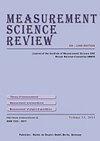Early Diagnosis of Dementia Patients by SPADE Activity Prediction Algorithm
IF 0.8
4区 工程技术
Q4 INSTRUMENTS & INSTRUMENTATION
引用次数: 0
Abstract
Abstract Dementia is not a specific disease, but a general term for age-related decline or loss of memory, cognitive abilities including problem solving and decision-making, and one’s own language, which significantly interfere with daily life. Researchers around the world have developed ways to automate the diagnosis of dementia through the use of machine learning and data mining approaches. The aim of this research project is to design and develop a day-to-day activity prediction algorithm in order to accurately identify and differentiate the dementia affected patients from the healthy subjects, to ensure early diagnosis of dementia development. This research advocates a novel algorithm called ‘Sequence Prediction via All Discoverable Episodes (SPADE)’ as a statistical tool to map activities of daily life (ADLs) in different groups of people in order to develop a unique parameter for precise diagnosis. The results of our experiment demonstrated a significant difference (i.e. 11 %) in the sequence prediction peak accuracy between the healthy subjects and the residents with dementia. SPADE demonstrated an adequate accuracy (i.e. 80 % on average), with an improvement of about 12 % compared to the performance of M-SPEED in inferring future occurrences of activities. It is thus evident that the algorithms for activity predictions show promise for early detection of dementia symptoms without the use of any expensive clinical procedure.SPADE活动预测算法在痴呆症早期诊断中的应用
摘要痴呆症不是一种特定的疾病,而是与年龄相关的记忆力下降或丧失、包括解决问题和决策在内的认知能力以及自己的语言的总称,这些都会严重干扰日常生活。世界各地的研究人员已经开发出了通过使用机器学习和数据挖掘方法自动诊断痴呆症的方法。该研究项目的目的是设计和开发一种日常活动预测算法,以准确识别和区分受痴呆症影响的患者和健康受试者,确保痴呆症发展的早期诊断。这项研究提倡一种名为“通过所有可发现事件的序列预测(SPADE)”的新算法,作为一种统计工具,绘制不同人群的日常生活活动图,以开发一个独特的参数进行精确诊断。我们的实验结果表明,健康受试者和痴呆症患者在序列预测峰值准确性方面存在显著差异(即11%)。SPADE证明了足够的准确性(即平均80%),与M-SPEED在推断未来活动发生方面的性能相比,SPADE提高了约12%。因此,很明显,用于活动预测的算法显示出在不使用任何昂贵的临床程序的情况下早期检测痴呆症状的前景。
本文章由计算机程序翻译,如有差异,请以英文原文为准。
求助全文
约1分钟内获得全文
求助全文
来源期刊

Measurement Science Review
INSTRUMENTS & INSTRUMENTATION-
CiteScore
2.00
自引率
11.10%
发文量
37
审稿时长
4.8 months
期刊介绍:
- theory of measurement - mathematical processing of measured data - measurement uncertainty minimisation - statistical methods in data evaluation and modelling - measurement as an interdisciplinary activity - measurement science in education - medical imaging methods, image processing - biosignal measurement, processing and analysis - model based biomeasurements - neural networks in biomeasurement - telemeasurement in biomedicine - measurement in nanomedicine - measurement of basic physical quantities - magnetic and electric fields measurements - measurement of geometrical and mechanical quantities - optical measuring methods - electromagnetic compatibility - measurement in material science
 求助内容:
求助内容: 应助结果提醒方式:
应助结果提醒方式:


